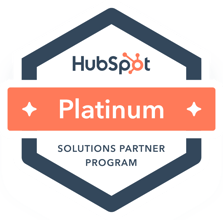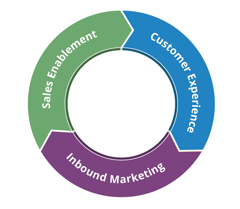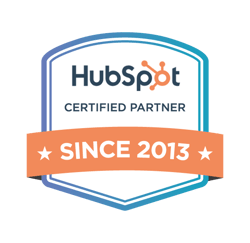In today’s overcrowded digital marketing landscape, self-serving outbound marketing techniques are becoming less and less popular. Instead, the focus is shifting to the implementation of inbound marketing. So, what’s the difference between these two forms of marketing? Unlike outbound marketing, inbound marketing is about understanding your customers and bringing value to them. According to HubSpot, inbound marketing is a complex process that consists of the following stages:
- Attracting strangers
- Turning strangers into leads
- Converting leads into paying customers
- Delighting customers with killer content and making them your brand advocates
Here are three simple ways to use SEO to help drive your inbound marketing campaign.
1. Understand Customer Intent When Optimizing for the Right Keywords
Google bots constantly refine their understanding of their users and deliver a personalized user experience. Let’s take an example of voice search. Google’s voice assistant recognizes your voice, allowing you to conduct highly relevant searches without having to look at your phone screen. Most importantly, it’s making the search more conversational. Instead of using brief phrases when conducting desktop searches to save time, we can now ask Google real questions and get awesome answers.
Given this example, it’s evident that the competition between the traditional keyword research and answering the questions organically doesn’t make sense. The latter is far more powerful. Therefore, user behavior should be your guiding star through the Search Engine Results Page (SERPs) instead of metrics like keyword density. You need to ask yourself the following questions:
- What products/services are they using right now?
- What are their major expectations and pain points?
- What topics do they want to learn more about?
- What questions are they usually asking?
Simply put, people are asking questions, and your goal is to answer them on your homepage, product pages, FAQ section, or blog. You can use Google Trends to understand how your target audience is conducting searches.
Sure, you need to track your keyword rankings, and that’s where tools like Google Analytics, SEMrush, Ahrefs, and Moz can help you. If you’re using multiple tools to track your keyword rankings, you can place them under the same SEO reporting tool. These platforms integrate with your SEO metrics and combine different widgets, letting you track your most important metrics on one dashboard.
2. Create Valuable Content
Content marketing is the most essential piece of an inbound marketing puzzle. It helps you boost your authority in your industry, drive qualified traffic to your site, and engage your customers. However, not every piece of content you create brings value. As Google is constantly getting more intelligent, creating promotional articles doesn’t work anymore. Today’s online customers are more demanding and expect you to tailor your blogging strategy to their preferences.
To create blog posts that resonate with your target audience and set yourself apart, you first need to understand the customer journey. The next step is to tailor your content marketing strategy to that journey. Here is how:
- Create great headlines, as they grab people’s attention and drive clicks. Choose the ones that appeal to your customers and test them regularly to see what works.
- Include other forms of media, too. Infographics, videos, charts, podcasts, and images may be true engagement and conversion boosters.
- Write long-form, data-driven articles. Instead of publishing short posts, create original case studies, reports, and e-books that contain fresh data and unique insights into popular topics. The same goes for longer videos that drive more engagement.
- Create stories for your readers. Even if your blog posts usually revolve around massive data and stats, it doesn’t mean they need to be hard to read. On the contrary, you need to make them more digestible by creating an interesting narrative around these boring data. Use conversational language, add a plot to your stories, and engage your target audience more emotionally.
3. Utilize Guest Blog Posts
Guest blogging is one of the most powerful inbound marketing strategies. When implemented strategically, it provides high-quality backlinks, gives you authority, and lets you build relationships with the influencers in your niche. Unfortunately, many marketers don’t take guest blogging seriously. They create low-quality content and focus on the quantity, not the quality of the links they build. This may only hurt both your online authority and SEO efforts.
To make your guest blogging strategy work for you, you first need to write and publish posts consistently. This is exactly how many famous names in the digital marketing industry, like Neil Patel, built their authority in the online sphere. On the other hand, frequent guest blogging shouldn’t affect the quality of your posts. They need to be highly informative, data-backed, and engaging, delivering value to the people reading them. Finally, creating quality content is purposeless if you don’t know where to publish it. Once you identify your guest blogging ops, you need to analyze their DA, quality of content, audience engagement, and industry relevance before reaching out to them.
These are just some out of hundreds of ways to use SEO in inbound marketing, but I believe they may be a good starting point for you. They will help you create sweet, link-worthy content, boost your online authority, and build stronger relationships with your customers. Inbound marketing is, after all, all about making your customers happy. Finally, don’t forget to set the right KPIs and track them continuously to figure out what SEO strategies work for you and adapt them accordingly.
If you're interested in implementing an SEO strategy or looking to improve your current SEO strategy, we invite you to schedule an inbound marketing consultation with our team. You can also check out our marketing explainer videos to learn more about SEO and its impact on your website.


.png?width=80&height=80&name=diamond-badge-color%20(1).png)
__Square.png?width=250&height=250&name=Marketing_Hub_(1)__Square.png)




.png?width=250&name=diamond-badge-color%20(1).png)
